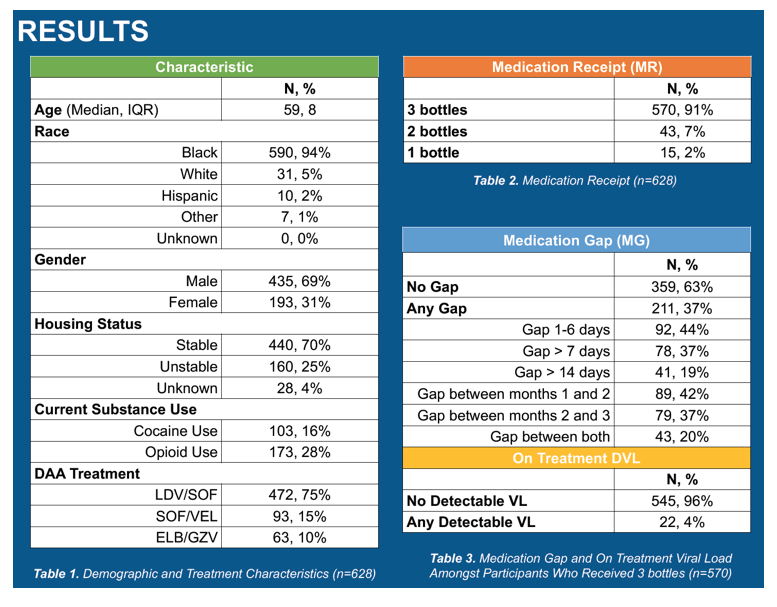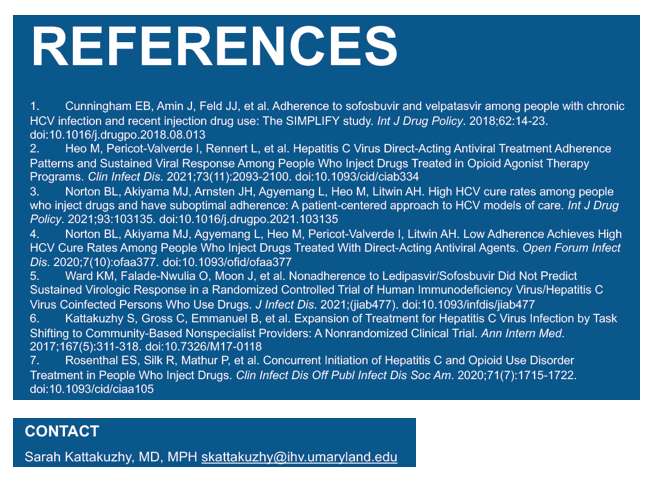 |
 |
 |
| |
Association of sustained virologic response with measures of
direct-acting antiviral adherence in patients with Hepatitis C:
Data from the ASCEND and ANCHOR investigations
|
| |
| |
EASL 2022 June 22-26 London
S. KATTAKUZHY1, V. WANG2, C. GANNON2, S MOLLENKOPF3, C. AHMED2, S. CHAINANI3, J. SUN2,
H. MASUR2, S. KOTTILIL1, E. ROSENTHAL1
1 Institute of Human Virology at the University of Maryland School of Medicine Baltimore, Maryland, USA; 2 Critical Care Medicine Department, Clinical Center,
National Institutes of Health, Bethesda, Maryland, USA; 3 University of Maryland School of Medicine, Baltimore

• In this analysis of 628 individuals treated with DAA, nearly 1 in 10 did not complete treatment, and greater than 1 in 3 had medication gaps, which were inversely associated with SVR.
• There were few associations between measures of adherence and race, gender, housing status, or substance use.
• Patients with imperfect adherence still achieved rates of SVR greater than 75 percent.
• These data suggest that nonadherence is common, and that patients should be continued on treatment regardless of adherence.
• These data support the removal of current policies that delay medication receipt, such as mandatory on-treatment phone calls, visits,
or lab checks for adherence



• MR was significantly associated with SVR (p<0.00001), but was not associated with gender, race, or substance use.
• Of the 570 who received all 3 bottles, 211 (37%) had a MG of at least 1 day (range 1-197, median 7)
• MG of ≤14 days inversely associated with SVR (p = 0.037); however, MG of ≤7 days had no association with SVR.
• Of the 211 with MG, 89 patients had a gap between months 1 and 2, 79 between months 2 and 3, and 43 between both. There was no association with timing of MG and SVR.
• For patients who received 3 bottles and had treatment VL assessment, 22 (3.9%) had DVL; this was inversely associated with SVR (p<0.0001).
• Current cocaine (p=0.05) and opioid use (p<0.001) were significantly associated with DVL but race, gender, housing were not.

|
| |
|
 |
 |
|
|